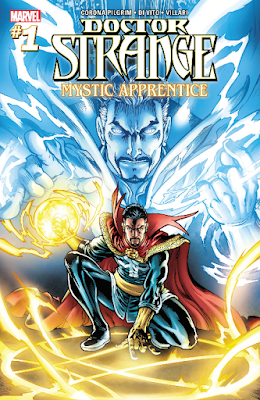 |
Netflix "Iron Fist" may be the weakest Marvel series on Netflix...
but compared to Marvel's shows on networks like ABC and Hulu...
well, that's a different story |
Iron Fist (season one)
Marvel's most underrated TV show
I was a bit apprehensive about this show going in, first because I'm a fan of most of the other Marvel superheroes, but I've never been a particular
Iron Fist fan, and second because of the overwhelming number of bad reviews it's received.
The chief complaints seemed to be: 1) it's the weakest of the Marvel Netflix series, 2) Iron Fist (AKA Danny Rand) is unlikeable, 3) there is no awesome villain like Kingpin, Cottonmouth, or Killgrave, 4) it strays pretty far from the comic, and 5) the fight sequences aren't that good.
While all those things are
technically true, I was pleasantly surprised to find the show was not only not bad, but actually quite good. How can the above criticisms be true and yet the series is still good? Well, let's break each of those criticisms down one by one.
1) It's the weakest of the Marvel Netflix series.
Yes. But talk about a high bar!
Daredevil was so good that Netflix chose it as one of it's first original series. It and
Jessica Jones are A+ shows - some of the best TV (let alone superhero) shows ever made in the 75 year history of the medium, and
Luke Cage isn't far behind. So yeah,
Iron Fist isn't
that good, but it's at least a B+ if not better, which puts it well above most of the rest of the shows that have ever aired, and it's easily superior to the non-Netflix Marvel shows. In fact, although
Luke Cage gets a lot of praise, I'd argue that it's strengths are primarily from the novelty of an all black cast, and the wonderful Harlem setting, nightclub singers, etc. but it's story line is pretty standard vigilante-vs.-crime boss, not terribly different from
Daredevil, while
Iron Fist has a far more nuanced plot.
2) Danny Rand is un-likeable
This is a matter of opinion, but I'll concede that he isn't the most
heroic of superheroes. But this is one of the reasons I find the show so compelling. He's the youngest of all the Marvel TV heroes, and he spent his entire life living in a monastery, is it any wonder he's not relatable? Yes, he is incredibly naive. To portray him otherwise would be a disservice to the character. Yes, he does spend a majority of the series being a tool (literally) of the bad guys, but then so does fan-favorite Colleen Wing (whose inclusion is often cited as one of the points in the show's favor) and she wasn't raised in a monastery, so what's her excuse?
3) There is no awesome villain like Kingpin, Cottonmouth, or Killgrave
Again, this is true. Vincent D'Onofrio, Mahershala Ali, and David Tennant steal every scene they're in as the respective bosses of the other Marvel Netflix shows. But this again is the result of
Iron Fist being structured different. Daredevil, Jessica Jones, and Luke Cage all have vendettas against specific people. Danny Rand has a vendetta also, but he doesn't know against whom. There is no one crime boss here, but a number of shadowy figures and organizations exerting influence over him and the world in general. This show is less like
The Adventures of Superman, and more like
The X-Files when it comes to that. Which means while there are some organization leaders, there are no singular supervillains to dominate the storyline. And more importantly, there are a lot more shades of grey here. Just as nearly every "heroic" character is in some ways unsympathetic (qv #2 above), nearly every villain here is in some ways sympathetic. Instead of one likeable hero and one likeable villain, you get an array of characters that are all to some degree both likeable and un-likeable.
4) It strays pretty far from the comic.
The fans of the comic may have a legitimate beef here. I can't comment too much since, as stated before, I was never a huge fan of this particular comic. But it seems to me that all the Marvel TV shows depart from the comics to some degree. Perhaps someday fans of
Power Man and Iron Fist will get the straight adaptation they've always wanted. Until then they may have to be satisfied that like other B-list Marvel anti-heroes like The Punisher and Ghost Rider, they're fortunate enough to make it to the screen at all. And even if it's not as faithful to the creator's original visions it beats seeing them given the Adam West
Batman treatment.
5) The fight sequences aren't that good.
Hogwash. Yeah, compared to the amazing fight choreography of
Daredevil the fight sequences aren't that good. But what other show is? Again we have a situation of falling short of a really high bar. Martial arts films have gotten so stylized that many were probably expecting that here. But if the fights alone were given
The Raid type treatment, there wouldn't be nearly enough time to develop the plot. As it is, the series resolves itself a tad too quickly (one of my chief complaints). The decision to forego a lot of extended fight sequences is one of the more questionable ones made by the showrunners, but one only hopes that they take a cue from the masses and hire a Hong Kong action expert for next season. For most people, though, the fights are more than adequate to tell the tale.
**** out of *****







